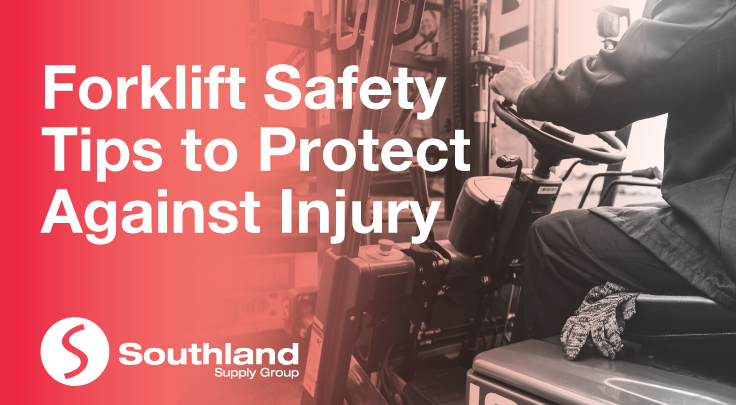
Forklifts are one of the most commonly used machines in the modern workplace, but they also represent one of the most significant hazards.
Forklift operators and other employees working around them are at risk from hazards such as tip-overs, collisions, struck-by conditions, etc. Here are some forklift safety tips to help ensure employee safety and prevent hazards.
1. Get Forklift Certification
Most forklifts accidents are due to poor training. It is therefore vital, that those operating a forklift have been trained and licensed in accordance with state OH&S laws. Employers must evaluate their employees’ performance and supplement training with lectures, videos, software training, and demonstrations.
2. Wear Proper Safety Clothing
Forklift operators should wear the appropriate safety equipment such as hi vis jackets, safety boots, and hard-hats. Make sure to tuck away loose clothing to prevent it from getting caught in moving parts.
3. Operate at a Safe Speed and Use Caution on Grades or Ramps
Drive the forklift within the designated speed limits. Keep in mind that it is important to not stop, turn, or change directions suddenly, as these actions can cause the forklift to tip over. If the forklift starts to dip, do not try to jump clear of the machine. Instead, it is better to stay in the vehicle, grip the wheel, and brace your feet. The use of forklift speed limit signs is a great way to remind workers to operate at a safe speed.
4. Implement a Floor Marking System
A practical floor marking system can help increase worker safety. Use yellow floor marking tape to mark physical hazards, such as areas that are prone to cause stumbles or falls, and red floor marking tape to identify fire hazards, fire equipment and emergency switches. It’s also helpful to place way finders and signs throughout the site to keep pedestrians away from forklift paths, lead forklifts along safe routes, and improve the overall flow of traffic.
5. Avoid Hazardous Areas of the Equipment
Avoid standing or walking under a forklift attachment as they can fall off on anyone positioned below it. Keep hands and feet clear away from the forklift mast, as a moving mast can cause serious injury.
6. Inspect the Equipment Daily
Forklifts should be thoroughly inspected before every use. It is recommended to do daily checks with the shift supervisor to identify and log any problems or defects. A forklift that requires repair should never be operated. Some of the recommended checks include:
- Test operating controls such as brakes, lights, horn, and steering wheel
- Check mast and overhead guard for damage
- Examine tires and fluid levels (hydraulic, brake, engine, fuel, and coolant)
- Check for water, oil, or radiator leaks
- Ensure the forks are in good condition (e.g. straight, no cracks, no distortion)
- Look for potential hazards around the operating area
Most of the hazards posed by forklifts can be alleviated with proper training, custom signage and clear visual communication. Southland Supply Group can help you create custom signs, including speed limit signs, printed floor marking tape, maintenance labels, safety reminders, and more. For more details, check out our website at https://www.southland.com.au/ or contact us at 1800 77 22 91.
